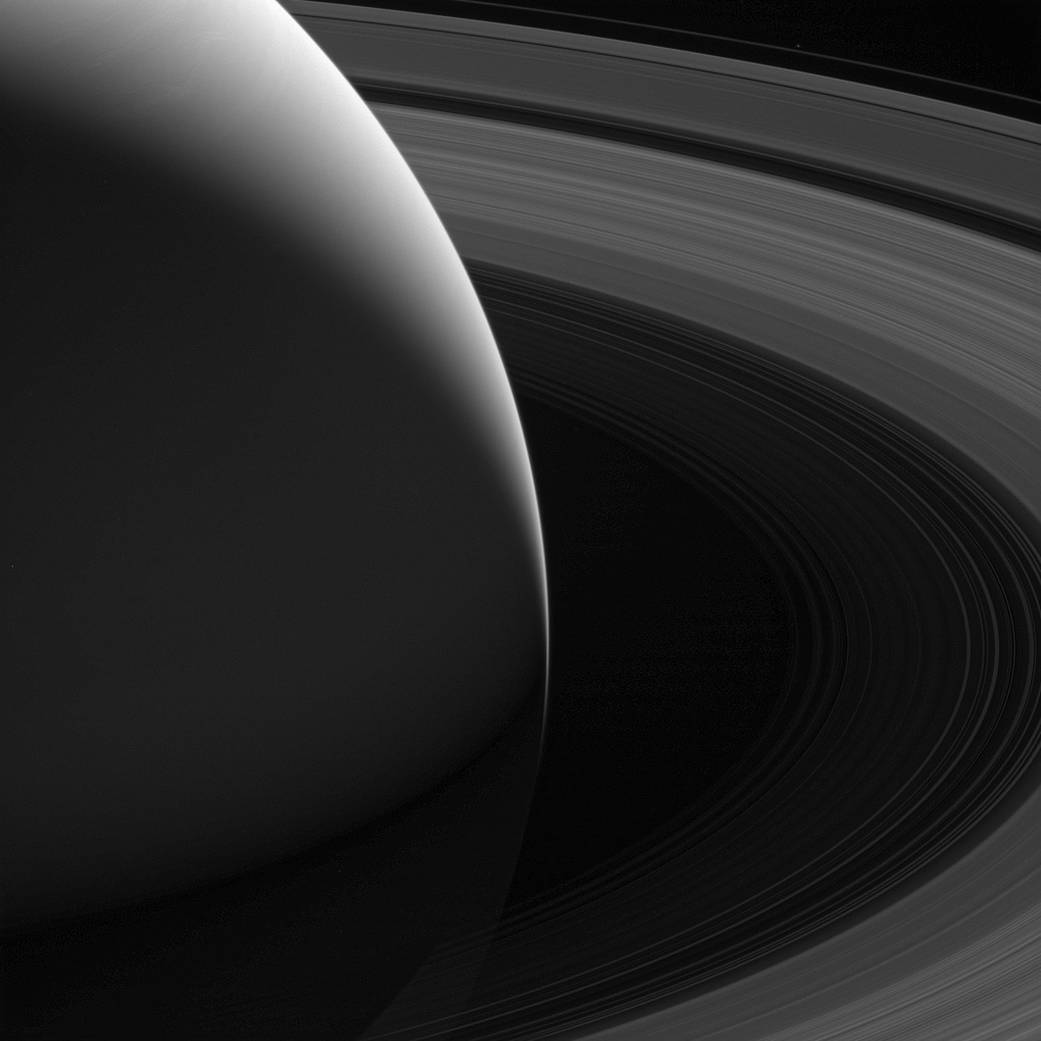Beautiful Saturn: Ringed Planet Shines in New Cassini Photo

Another gorgeous Saturn photo has emerged from the Cassini archives.
The newly released image, which NASA's Cassini spacecraft took on Aug. 12, shows the gas giant and its iconic rings in all their glory. And if you look carefully, you can see the tiny moon Pandora; it's a faint dot near the top of the photo, just beyond the thin outer F ring.
"Also in this image is the gap between Saturn's cloud tops and its innermost D ring, through which Cassini would pass 22 times before ending its mission in spectacular fashion [on] Sept. 15, 2017," NASA officials wrote in an image description today (Oct. 23).
"Scientists scoured images of this region, particularly those taken at the high phase (spacecraft-ring-sun) angles, looking for material that might pose a hazard to the spacecraft," they added.
When it took the photo, Cassini was about 581,000 miles (935,000 kilometers) from Saturn and 691,000 miles (1.1 million km) from Pandora. The 50-mile-wide (80 km) moon was brightened by a factor of two to make it more visible, NASA officials said. [Saturn's Glorious Rings! Cassini's Close-Up Photos]
The $3.2 billion Cassini-Huygens mission — a joint effort of NASA, the European Space Agency and the Italian Space Agency — launched in October 1997 and arrived at Saturn on the night of June 30, 2004. (Huygens was a piggyback lander that touched down on Saturn's biggest moon, Titan, in January 2005.)
After more than 13 years of groundbreaking work in the Saturn system, Cassini was running low on fuel. So mission managers directed the probe to plunge intentionally into the ringed planet's thick atmosphere on Sept. 15, a suicide maneuver designed to ensure that Cassini never contaminated Titan or fellow Saturn satellite Enceladus with microbes from Earth. (Astrobiologists think both moons might be capable of supporting life.)
Get the Space.com Newsletter
Breaking space news, the latest updates on rocket launches, skywatching events and more!
Follow Mike Wall on Twitter @michaeldwall and Google+. Follow us @Spacedotcom, Facebook or Google+. Originally published on Space.com.
Join our Space Forums to keep talking space on the latest missions, night sky and more! And if you have a news tip, correction or comment, let us know at: community@space.com.

Michael Wall is a Senior Space Writer with Space.com and joined the team in 2010. He primarily covers exoplanets, spaceflight and military space, but has been known to dabble in the space art beat. His book about the search for alien life, "Out There," was published on Nov. 13, 2018. Before becoming a science writer, Michael worked as a herpetologist and wildlife biologist. He has a Ph.D. in evolutionary biology from the University of Sydney, Australia, a bachelor's degree from the University of Arizona, and a graduate certificate in science writing from the University of California, Santa Cruz. To find out what his latest project is, you can follow Michael on Twitter.









